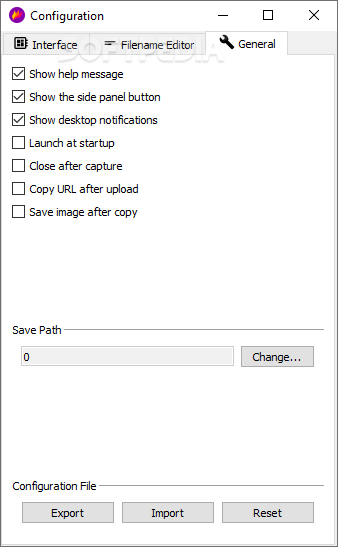

#Flameshot screenshot install#
Install it either from Ubuntu Software or by running sudo apt install gnome-screenshot command in terminal.įirst of first, if you just want to take a screenshot. GNOME Screenshot is no longer default since GNOME 40 (meaning Ubuntu 22.04 and higher). Just make sure you give me as much information as you can so that I can help you easier and give you exactly what you need.Looking for screen capturing application for your Ubuntu desktop? Here are 7 popular graphical tools you can try.
#Flameshot screenshot free#
If you have any questions or need help, feel free to open a new issue. To prevent this page to get lengthy, I moved the content of this part to contribute page. "make check" to check if you have all dependencies installed There is also a small help available for the make which can be seen using make help and will output the following: Available arguments: This is a dmenu script and user does not need to insteract with it using the command line, but just in case, a very short help is available using -help or -h. If you have automatically installed dmenu_shot, you can easily remove/uninstall it automatically as well: make remove For instance, for the "Bordered" you can have: line_color = "#ff0066" line_thickness = 2 corner_radius = 7 For every configurable action, you can create a section with the name format. If there is something unexpected in the config file, you will see some error messages to help you fix the issue.įor some tools you can configure some of the default settings through the same config file. # Anything after # is considered comment normal_foreground = "#ff6600" normal_background = "#8501a7" selection_foreground = "#ffcc00" selection_background = "#fa0164" You can also use comments and empty lines in the config file. Until this version we accept a section named which can have the custom color values of the dmenu as shown below. The default path would be ~/.config/dmenu_shot/config.toml but you can set a environment variable named DMENU_SHOT_CONF_PATH to overwrite the default path and point the dmenu_shot to a custom file. I suggest ~/.local/bin:ĭmenu_shot can be configured using a simple TOML file. Copy the file to the location you want.You can also install dmenu_shot by installing dmenu_shot-git with your preferred AUR helper. All you need to do is to close your terminal and open it again and run dmenu_shot. This makes the command dmenu_shot be usable in your terminal. This will install the dmenu_shot to ~/.local/bin (so it will NOT install it system-wise and will be only installed for the current user).
#Flameshot screenshot zip file#
Clone this repo or download and extract the zip file.When you have installed all the dependencies, simply do: If you have the make installed, you can check what dependencies are installed and which ones are missing using: make check bash: The dmenu_shot is written in bash.make: This is only a dependency for automatic installation and dependency checking.It is used for letting us selecting the window with mouse. xdotool a command-line X11 automation tool.This is specifically used in dmenu_shot for the convert command. ImageMagic: A software for image manupulation.It can be custom built but should be available in the PATH. This script expects the user to have the following softwares installed: If you don't know how, click on your Desktop Environment: To see what it does, check out the actions.Īfter installation (which is basically copying a shell file to your PATH), you can either use the dmenu_shot command in terminal or bind this command to a keyboard shortcut. Select_Window let the user choose a window, and then it will take screenshot specifically of that window.Īll the outputs are copied to clipboard by default.Scaled the screenshot based on the provided percentage (e.g 75%) or to specific dimension (e.g 200x300).Bordered the screenshot with 3 pixel-wide read line.Remove_white background and make it transparent.Trim the extra white space from around the screenshot.The idea is to have a clean and easy to use dmenu menu to do some basic image manupulation using ImageMagic on the output of Flameshot.


 0 kommentar(er)
0 kommentar(er)
